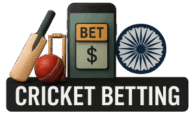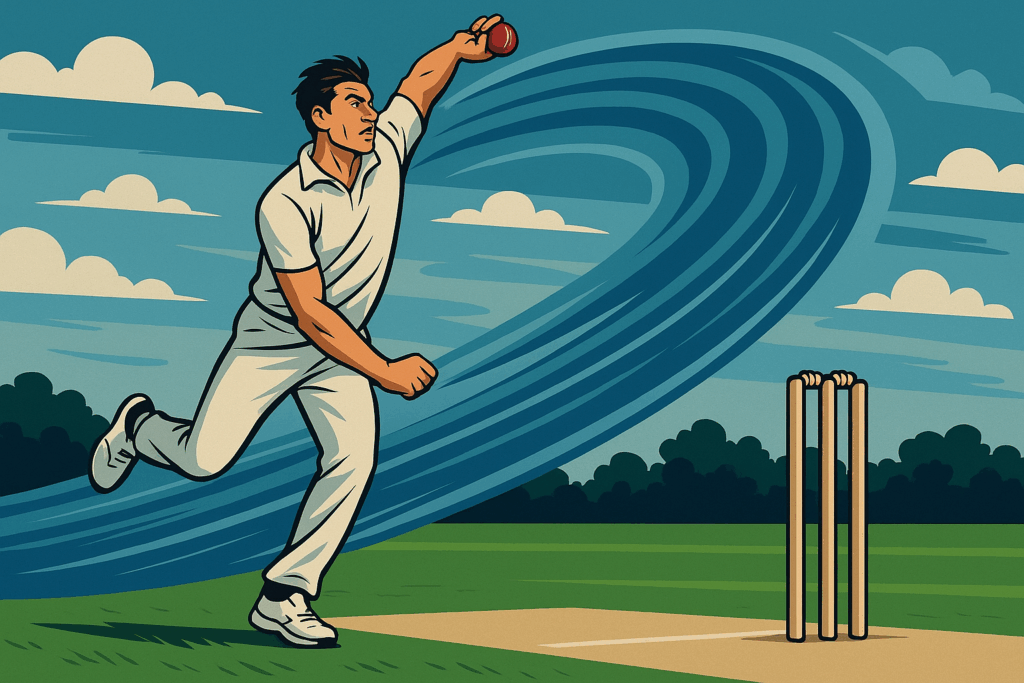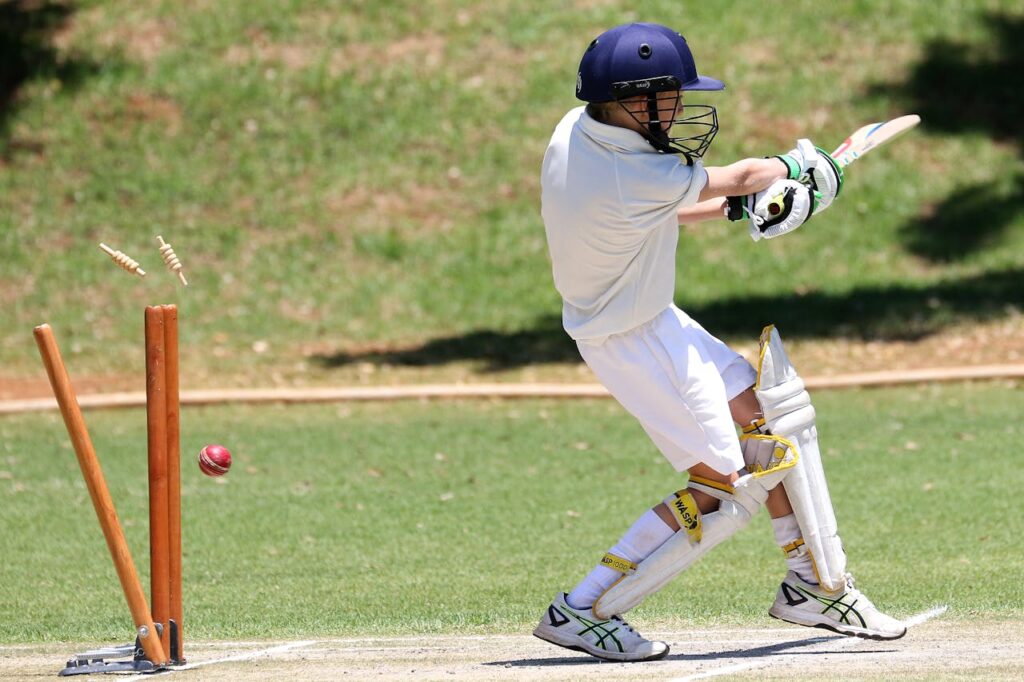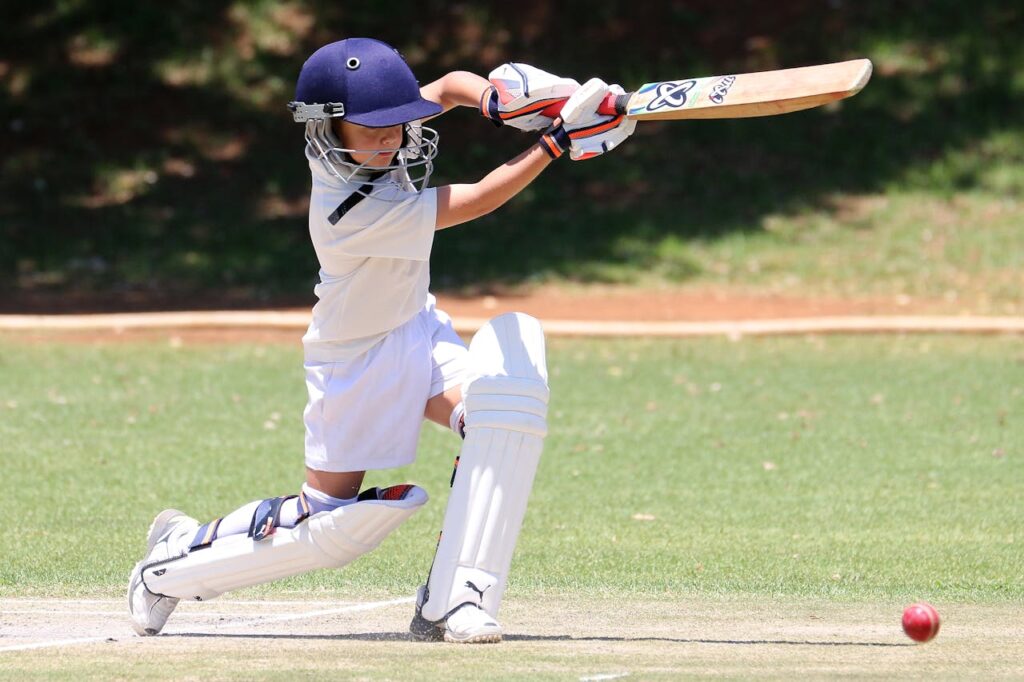There’s a singular moment that defines fast bowling—a blur ripping through the air, the violent snap of the ball searing past a batsman, and the collective gasp from the crowd as the stumps are wrecked or the batter just, just escapes. That flash of leather moving at over 150 km/h doesn’t just chart speed; it speaks of courage, control, and chaos carefully calibrated. Every generation debates who holds the mantle of the world’s fastest bowler—and it is not just about velocity, but about the thrill of intimidation, the science of biomechanics, and the art of unplayable deliveries.
To answer the question, “Who is the fastest bowler in the world?”, one must journey through the evolution of fast bowling across eras, conditions, and formats. The records provide numbers. The footage offers glimpses. But to truly understand what makes a bowler the fastest in cricket history, one must delve deeper—into the grainy tales from domestic circuits, the elite training regimens of pace factories, and those standalone moments when raw pace reshaped games and careers alike.
Welcome to an expert’s view on the world’s fastest bowlers, where numbers meet narratives, and speed is only the beginning.
🏆 Who Is the Fastest Bowler in Cricket History?
Let’s not bury the headline. To this day, the fastest ball ever bowled in cricket was clocked at 161.3 km/h (100.23 mph) by Pakistan’s Shoaib Akhtar.
It came against England during the World Cup, and it wasn’t a fluke—it was the culmination of years of meticulous training, biomechanical precision, and an aggressive mindset distilled into one delivery. With that ball, Akhtar didn’t just beat Nick Knight for speed—he branded his name across the record books for eternity.
But is one ball enough to crown someone the ‘world’s fastest bowler’? Not entirely. Speed must be consistent, impactful, and leveraged to outthink batters—not simply outpace them.
Still, the record stands.
| Rank | Bowler | Country | Top Recorded Speed (km/h) | Speed (mph) | Format Played During Delivery |
|---|---|---|---|---|---|
| 1 | Shoaib Akhtar | Pakistan | 161.3 | 100.23 | ODI |
| 2 | Brett Lee | Australia | 161.1 | 100.05 | ODI |
| 3 | Shaun Tait | Australia | 161.1 | 100.05 | ODI |
| 4 | Jeff Thomson | Australia | Estimated 160.6 | 99.8 | Test (Measured pre-speed gun) |
| 5 | Mitchell Starc | Australia | 160.4 | 99.6 | Test |
⚠️ Note: Older era fast bowlers like Michael Holding and Malcolm Marshall are absent from this list due to lack of sophisticated speed tracking at the time. Their legends, however, remain intact.
🎯 What Makes a Bowler Truly “Fast”?
Speed alone is thrilling but insufficient. The fastest delivery needs context—a proper bowling action, accuracy, bounce, and most importantly, intent. Fast bowlers don’t merely aspire to break the 150 km/h barrier; they design their game around pace as both a weapon and a psychological ploy.
Key Ingredients of World-Class Fast Bowling:
- Biomechanics – A fast bowler’s action must translate muscular effort into axial velocity. A high arm, strong front foot block, hip rotation, and efficient energy transfer are paramount.
- Mental Toughness – Bowling at express pace ball after ball isn’t physical exertion alone. It’s mental warfare. Knowing when to unleash the bouncer, how to set batters up for the yorker—it separates spearheads from sprinters.
- Consistency at Pace – The world’s fastest bowlers aren’t just about one 160+ km/h thunderbolt. They average 145-150+ across spells and do it on flat decks, dead rubbers, and under fatigue.
- Adaptability – Raw pace consumes energy quickly. Bowlers who adapt—altering lengths, changing wrist positions, using reverse swing—stay in the elite bracket longer.
🔟 Top 10 Fastest Bowlers of All Time (Ranked by Peak Speed)
Let’s now list the elite—the modern gladiators whose bowling speeds define their careers.
| Rank | Name | Country | Peak Speed (km/h) | Specialty | Known For |
|---|---|---|---|---|---|
| 1 | Shoaib Akhtar | Pakistan | 161.3 | Wristy slinger | “Rawalpindi Express”, unpredictable |
| 2 | Brett Lee | Australia | 161.1 | Seam bowler | Consistent pace, perfect biaxial form |
| 3 | Shaun Tait | Australia | 161.1 | Slinger-like action | Short stints, explosive bursts |
| 4 | Jeff Thomson | Australia | ~160.6 | Slingy, open-chested | “Thommo”—frightened even Viv Richards |
| 5 | Mitchell Starc | Australia | 160.4 | Left-arm fast | Inswinging yorkers at top speed |
| 6 | Andy Roberts | West Indies | ~159 | Deceptive pace | Dual bouncers – fast & faster |
| 7 | Fidel Edwards | West Indies | 157.7 | Whippy action | Surprise pace merchant |
| 8 | Anrich Nortje | South Africa | 156.2 | Modern tearaway | Quickest IPL over (in history) |
| 9 | Jofra Archer | England | 155.0 | Effortless action | Silent assassin; Test & T20 weapon |
| 10 | Mohammad Sami | Pakistan | 156.4 | Full wrist release | Often erratic, occasionally dangerous |
🇮🇳 Who Is the Fastest Indian Bowler?
No Indian pacer has breached the 160 km/h threshold yet. However, Umran Malik, from Jammu & Kashmir, has emerged as the fastest Indian bowler with deliveries clocked at 157 km/h in the IPL. Known for his natural slingy action, Malik represents a new breed of Indian pacers unafraid of hitting the danger zone.
| Player | Top Speed (km/h) | Format |
|---|---|---|
| Umran Malik | 157.0 | IPL |
| Jasprit Bumrah | 153.2 | International |
| Mohammed Shami | 152.0 | International |
| Umesh Yadav | 151.1 | Tests/ODIs |
| Varun Aaron | 150.7 | International |
The evolution of Indian fast bowling, once heavily reliant on medium pace and reverse swing, has now shifted toward grooming express pacers at the NCA and franchises.
📈 Fastest Bowlers in Today’s Game
Speed in the current era isn’t just about top-end bursts. With T20 leagues sprouting worldwide, bowlers now regularly attain 145+ km/h across formats. Here are the fastest bowlers in cricket right now.
| Name | Country | Peak Speed (km/h) | Format Dominance | Known For |
|---|---|---|---|---|
| Lockie Ferguson | New Zealand | 157.3 | ODI/T20 | Top speed change-ups |
| Anrich Nortje | South Africa | 156.2 | Test/T20 | Explosive pace + accuracy |
| Mark Wood | England | 155.0 | Test | Late movement at high speed |
| Haris Rauf | Pakistan | 154.3 | T20 | Yorker weapon in T20s |
| Naseem Shah | Pakistan | 152.7 | Test | Matured before 21 |
🌀 Fast Bowling by Format: Who Dominates, and Why?
Test Matches:
- Speed is often sacrificed for longevity.
- Bowlers like Pat Cummins, Jasprit Bumrah, and Rabada average 140-144 km/h but rely on seam movement and bounce.
- Exception: Mitchell Starc, who still hits above 150 km/h regularly with the red ball.
ODIs:
- Variations in pace key, but many express bowlers like Brett Lee and Shoaib Akhtar made their name here.
- Starc, Nortje, and Lockie Ferguson have carried the legacy forward.
T20:
- Speed with precision under pressure.
- Yorkers at 150+ km/h are prized.
- Bowlers like Haris Rauf, Umran Malik, and Mark Wood are redefining Powerplay and death-over tactics.
💣 Deliveries That Redefined Speed in Cricket
Let’s take a detour. Speed isn’t always about the top number. The impact matters more.
- Shoaib Akhtar to Nick Knight
161.3 km/h full delivery, ducks in slightly, squared him up—recorded history. Fastest ever. - Brett Lee to Craig McMillan
A 160+ bouncer in Perth. McMillan ducked—and it still brushed his helmet grille. Flashbulb moment. - Shaun Tait to Andrew Strauss
Delivered a spell in which he bowled four balls above 155 km/h. The fifth one cleaned Strauss’ stumps from around the wicket. Sheer fear.
🧪 The Science Behind Bowling Speed
Measuring top speed involves high-frame-rate cameras synced with radar technology like the Hawk-Eye or SpeedGun systems. The challenge?
- Release Point vs Bounce Measurement: Older speeds were often recorded after the bounce, underestimating them.
- Altitude & Humidity: Higher altitude = less air resistance = faster ball through the air.
- Light Ball vs Heavy Ball Allegations: Fast bowlers have faced scrutiny over ball weights, especially in franchise leagues.
🧠 Fast Bowlers and Mind Games
Speed in cricket isn’t just velocity—it’s chess at warp speed.
- Bodyline Legacy: England’s 1930s bouncers bruised not egos, but rib cages.
- Sledging + Short-Pitched Barrages: Shoaib Akhtar and Mitchell Johnson perfected the art.
- The Field Trap: Three slips, a gully, and the short square leg. Classic intimidation layout.
FAQs: Answering the World’s Questions on Fast Bowling
- Who is the fastest bowler in the world?
- Shoaib Akhtar, with his 161.3 km/h thunderbolt, holds the record.
- What is the fastest delivery in IPL history?
- Anrich Nortje clocked 156.2 km/h, bamboozling Jos Buttler.
- Which Indian has bowled the fastest delivery?
- Umran Malik, with a speed of 157 km/h.
- Who are the fastest bowlers in 2024?
- As per current data: Lockie Ferguson, Nortje, Wood, and Rauf are leading the charge.
- How fast can a cricket ball be bowled?
- Theoretically close to 165 km/h, but biomechanically difficult to sustain.
🧭 Final Thoughts: Pace Isn’t Just a Number
The tale of the world’s fastest bowler isn’t merely a tale of stopwatch numbers. It’s about legacy, fear, resilience, and physiological limits being tested match after match. Shoaib Akhtar, Brett Lee, and others redefined what spectators believed possible. Today’s bowlers carry that baton—some launching thunderbolts, others crafting career-defining spells.
But pure pace remains cricket’s wildest thrill—louder than a six, more visceral than a reverse sweep. One ball, one blur, and the contest tilts.
So, the next time you hear the stumps crash behind a dazed batter, remember: speed, in cricket, isn’t just about milestones. It is about moments. And those moments belong forever to the fast bowler.



